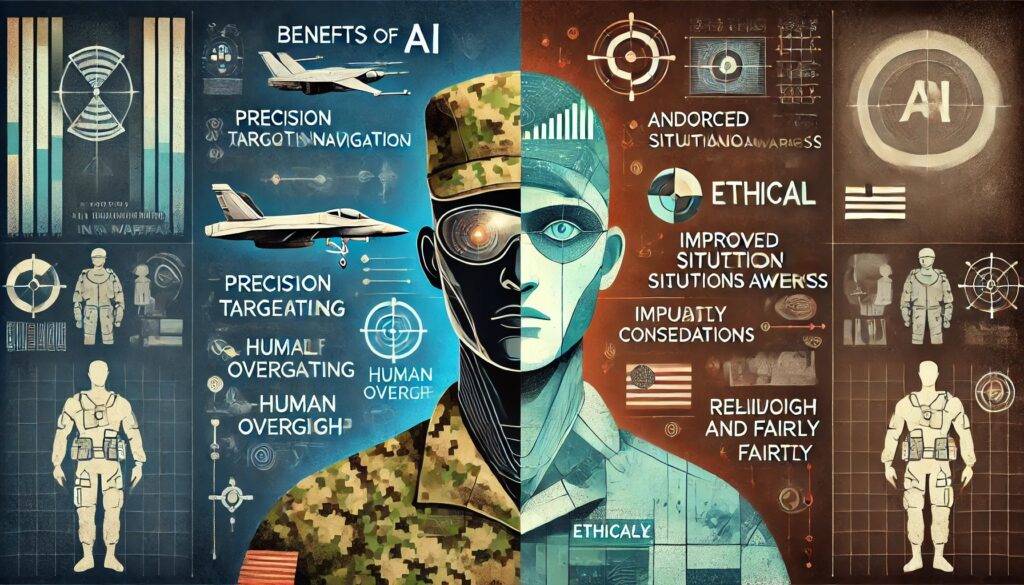AI and the Changing Character of Warfare: How Technology Is Reshaping Modern Conflict
Introduction: A New Chapter in Military Evolution
The face of war is changing—from traditional battlegrounds to digital frontiers. In today’s rapidly evolving landscape, artificial intelligence (AI) in warfare is emerging as a transformative force. Nations are integrating smart technologies into defense strategies, reshaping not just how wars are fought, but how they’re perceived, managed, and even deterred.
As discussed in The Express Tribune’s editorial, AI is no longer limited to science fiction. It is now a critical tool in national security, triggering debates on ethics, legality, and the future of warfare.
From Drones to Decision-Making: What AI Brings to the Battlefield
AI is being applied across the military spectrum—from logistics and surveillance to autonomous combat and cyberwarfare. Lethal Autonomous Weapon Systems (LAWS), in particular, have captured global attention. These systems can identify, track, and engage targets without direct human input, raising both strategic possibilities and ethical red flags.
Unlike traditional weapons, LAWS are driven by algorithms. Their ability to make split-second decisions can be a tactical advantage—but what happens when a machine makes the wrong call? Who is responsible?
The use of AI in targeting and operational planning is revolutionizing combat but also complicating accountability, making it harder to attribute decisions to a human chain of command.
The Global AI Arms Race: Who’s Leading?
The integration of AI in military systems isn’t confined to one nation. It’s a global race—with powerful countries investing billions to dominate this new frontier.
1. United States
The U.S. leads in AI military development. Programs like the Autonomous Multi-Domain Adaptive Swarm of Systems are creating autonomous drone swarms that communicate in real-time, overwhelm enemy defenses, and operate across land, air, and sea.
2. China
China’s New Generation Artificial Intelligence Development Plan aims to make it the world leader in AI by 2030. With heavy investment in AI-based surveillance and predictive warfare models, China is rapidly expanding its digital military footprint.
3. India
India’s defense sector has also embraced AI. The launch of 75 AI-based military platforms during the ‘AI in Defence’ symposium shows the country’s determination to integrate AI into military technology and decision-making.
These developments reflect one clear truth: AI in warfare is not a future trend—it’s today’s reality.
Ethical Dilemmas in AI Warfare
As we hand over more decisions to machines, ethical concerns are escalating.
A controversial example is the “Habsora” (Gospel) system used by the Israeli Defense Forces, which employs AI algorithms to prioritize airstrike targets. Critics argue such systems risk high civilian casualties and violate international humanitarian law if not carefully monitored.
With machines analyzing vast data sets to predict enemy movement or civilian patterns, the line between military targets and collateral damage becomes increasingly blurred. Who draws the moral boundaries in a machine-led war?
Can We Regulate AI in War?
Despite the risks, there is no unified international agreement on regulating lethal autonomous weapons. The lack of consensus makes AI warfare a legal and diplomatic minefield.
Organizations like the United Nations and Campaign to Stop Killer Robots have been calling for regulation, but geopolitical tensions continue to stall progress.
Establishing a global framework for AI ethics in warfare is more important than ever. Without it, the unchecked rise of autonomous weapons could escalate conflicts faster than humans can control them.
AI as a Force Multiplier: Not a Replacement for Soldiers
Despite concerns, AI doesn’t necessarily eliminate the human role in war—it augments it. When used responsibly, AI can reduce human error, speed up intelligence analysis, and help save lives by predicting threats in advance.
But this only works when there’s clear human oversight. Military experts agree that critical decisions—like launching a strike—must remain in human hands.
Blending AI with human judgment is key to ensuring ethical and effective military operations. The future of warfare should focus on human-machine collaboration, not full automation.
The Future of Conflict: Faster, Smarter, Riskier
The introduction of AI-driven warfare systems makes modern conflict faster and less predictable. Wars might no longer begin with troops crossing borders, but with an algorithm triggering cyberattacks or drone swarms.
AI enables preemptive strikes, real-time battlefield analysis, and autonomous retaliation, making the decision window incredibly small. While this may deter aggression through superior tech, it also increases the risk of unintended escalation.
That’s why the future of warfare needs thoughtful design, not just powerful code.
Conclusion: Choosing the Right Path in AI-Driven Warfare
Artificial Intelligence is rewriting the rules of modern conflict. From autonomous drones to predictive military strategies, AI in warfare is here to stay. But with this advancement comes a greater responsibility: to ensure technology is used ethically, legally, and with a clear moral compass.
If nations continue down this path without regulations, we risk creating a battlefield where human life is decided by lines of code.
It’s time for global leaders, defense experts, and ethicists to come together and shape the future of war—before war shapes the future of humanity.
